 |
||||||||||||
| HOW TO MAKE (ALMOST) ANYTHING MIT MEDIA LAB |
|
PROJECTS | ABOUT | CONTACT | ||||||||
|
|
|||||||||||
| COMPUTER-CONTROLLED MACHINING - week5 | ||||||||||||
The plan was again to make an epic tetrahedron, this time Anya-size, inside of which I can devise a dance in accordance to my Final Project Proposal. Based on the design from previous week, I wanted to create the outline of a tetrahedron that is about my height, which would be assembl-able from separate puzzle piece parts. Four of those objects combined into one was the ultimate idea, for a tetrahedron twice my height, which is actually made up of 4 smaller ones. To create each of them, I used a combination of Illustrator and Rhino to make the "puzzle pieces" that comprised identical faces of each tetrahedron. Each face contained 6 different types of parts: the bottom long line, the sides with zippers (one side with 4 tabs, other side with 3 tabs), the angles on the bottom, the top connecting piece, and the "hat." Download the files in .pdf and .ai - there are a few, all include the same parts just in different arrangements for 2" x 8" insulation foam. |
||||||||||||
 |
||||||||||||
 |
||||||||||||
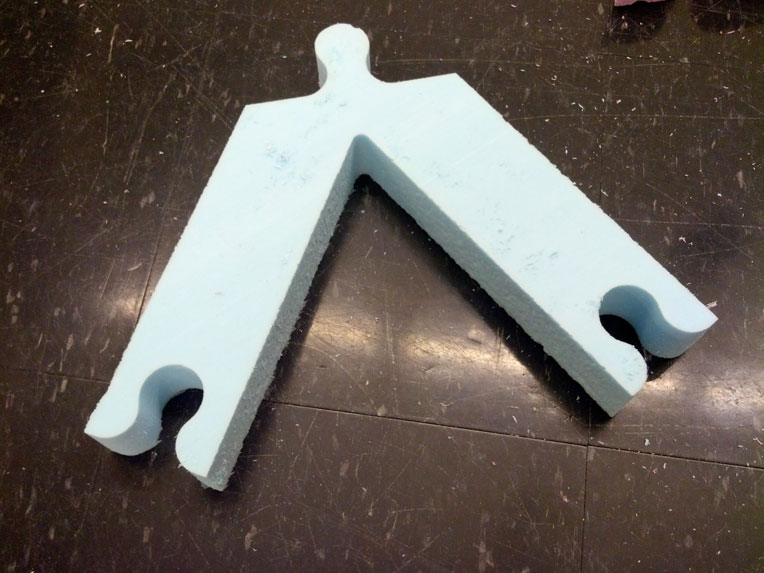 |
||||||||||||
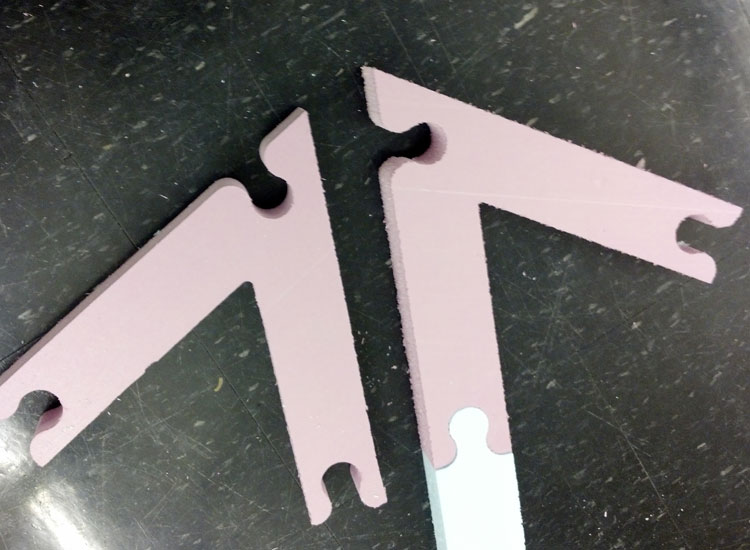 |
||||||||||||
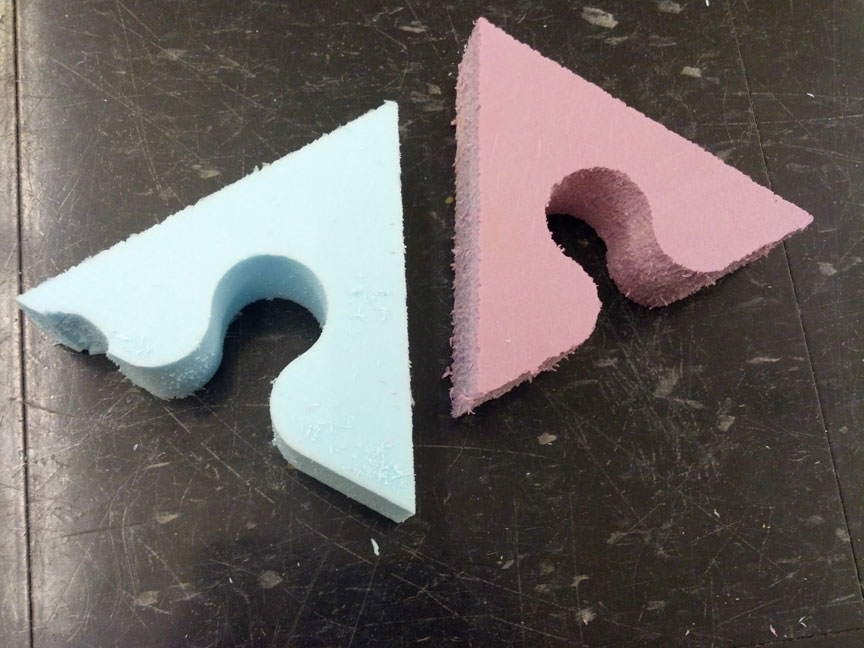 |
||||||||||||
| Here are those pieces printed, together with the file from Illustrator of those separate puzzle pieces arranged as tightly as possible on a 2" x 2' x 8' insulation foam sheet | ||||||||||||
 |
||||||||||||
| Shop Bot Settings | ||||||||||||
| This rather lengthy process was marked by impatience. It's obvious from this photo that slower feed rate, more iterations - is a good idea. But, given the length of the set-up and cutting, and given the number of people usually in queue, I ended up setting feed rate to 1.0 for 1/4" mill. This made the edges rather rough, and whatever time I won in the machining part I lost in the cleaning part! Spindle speed 10,000rpm, feed rate 200 in/min, plunge rate 75 in/min. 1/8" drill to make holes, 1/4" End Mill tip to cut out Profile Toolpath. Taking the material in the very beginning to the bed helped keep it in place. I made a separate toolpath to drill small holes for screws, as the arrangement of my parts was far too irregular to allow nails to be put just anywhere. The Shopbot worked much more smoothly, though, if I saved these toolpaths as different files as opposed to one toolpath that needed pausing and changing the bits (Out of safety, Shopbot moved incredibly slowly and I ended up cancelling the job in any case). | ||||||||||||
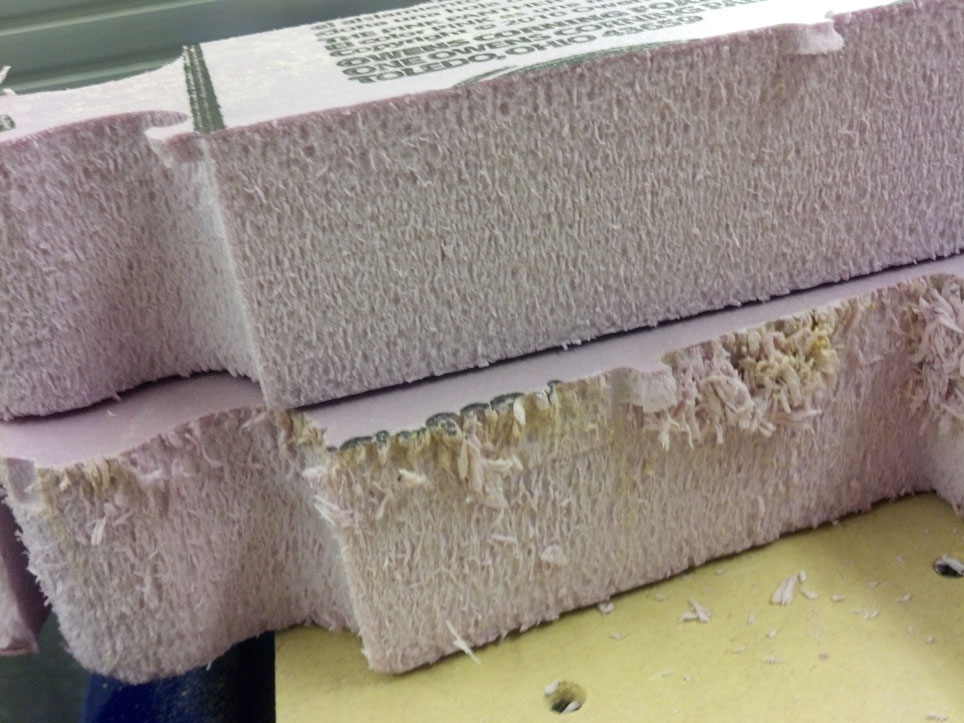 |
||||||||||||
| It turned out also that the pink foam is slightly more dense and the blue foam is slightly lighter. The difference isn't huge, but when putting these structures on top of each other with a small point of contact, it did end up making a difference. Here is one of the tetrahedra assembled: | ||||||||||||
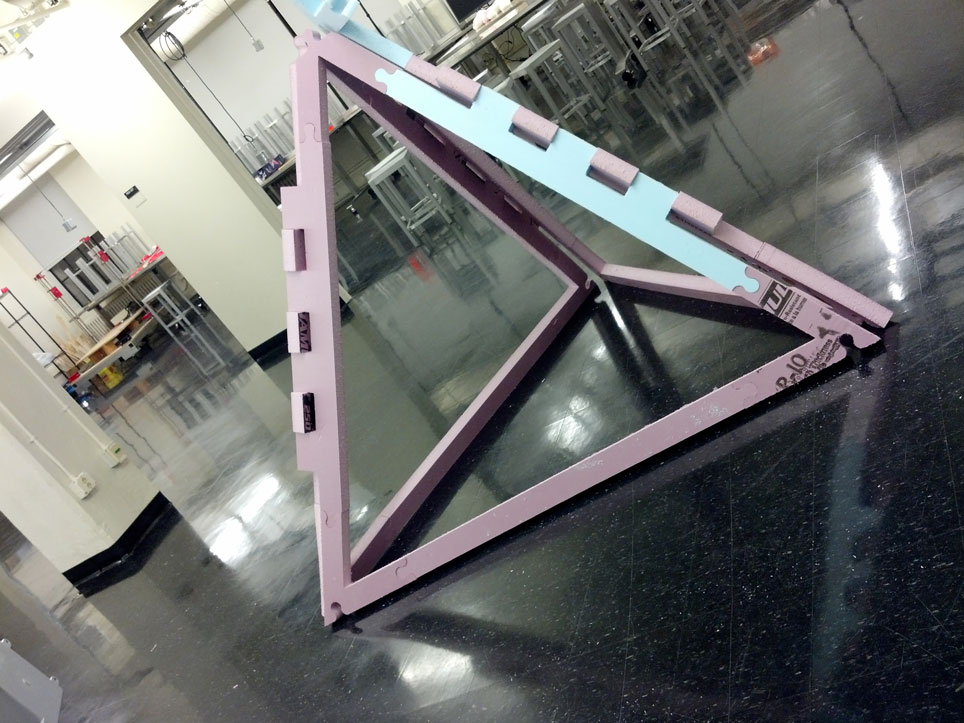 |
||||||||||||
| Aaand here is as far as I got putting the whole of it together! Definitely a good idea to use pink for bottom and blue for top precisely because of that weight difference I learned! It is also clear from this drawing that the tetrahedra in the front are not lined up fully - this is because the top piece actually needs an additional "helper" puzzle piece to make it longer. I milled all the tetrahedra to be the same, but since the bottom later of tetrahedra is overlapping with the top layer, the long horizonal part of the top tetrahedra is actually stretched out and needs more material to cover the distance! Glad I got this far to learn this and recalculate! | ||||||||||||
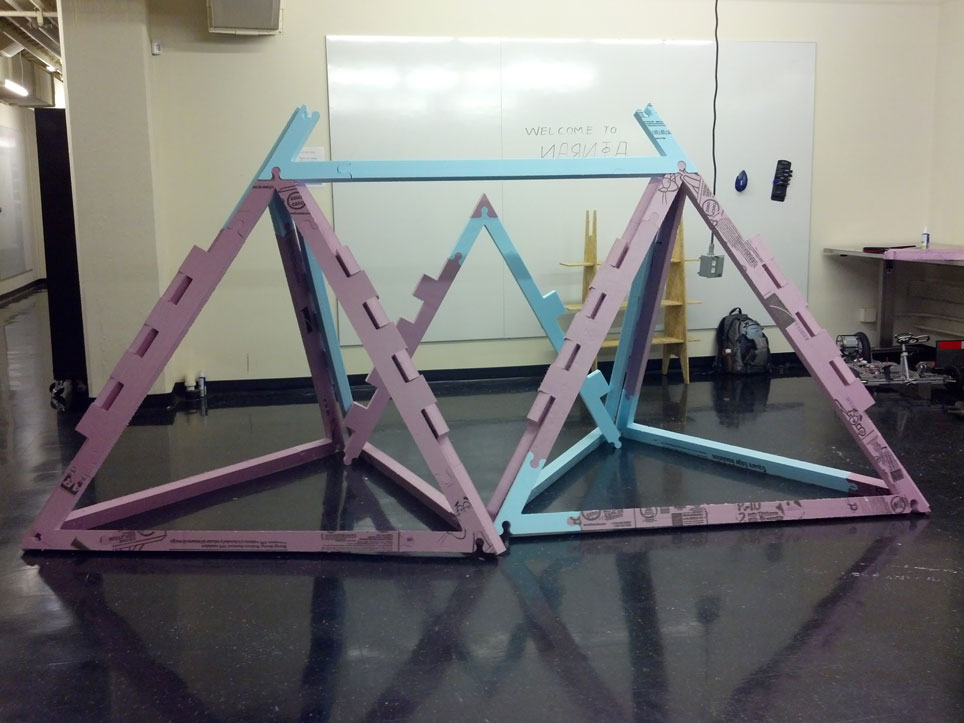 |
||||||||||||
| The hope is to refine the structure such that one can keep adding layers of tetrahedra to expand the structure more and more! Like the 3D printed version... | ||||||||||||
 |
||||||||||||
| From here forward... | ||||||||||||
| It would be good to think of other material, too, that would be sturdy enough not only to dance inside of but actually hang from. In the meantime, here is a snippet of the Laban dance. The point is to use the structure - the inside space, its edges and points, the outside space, and the space in between - in order to help the body find 26 points that define a cube outside of the body. More on this soon... | ||||||||||||
26-point movement in a not-quite-finished tetrahedron made up of 4 not-quite-finished tetrahedra from Anya Yermakova on Vimeo.
| Copyright 2013 by Anya Yermakova | ||||||||||||